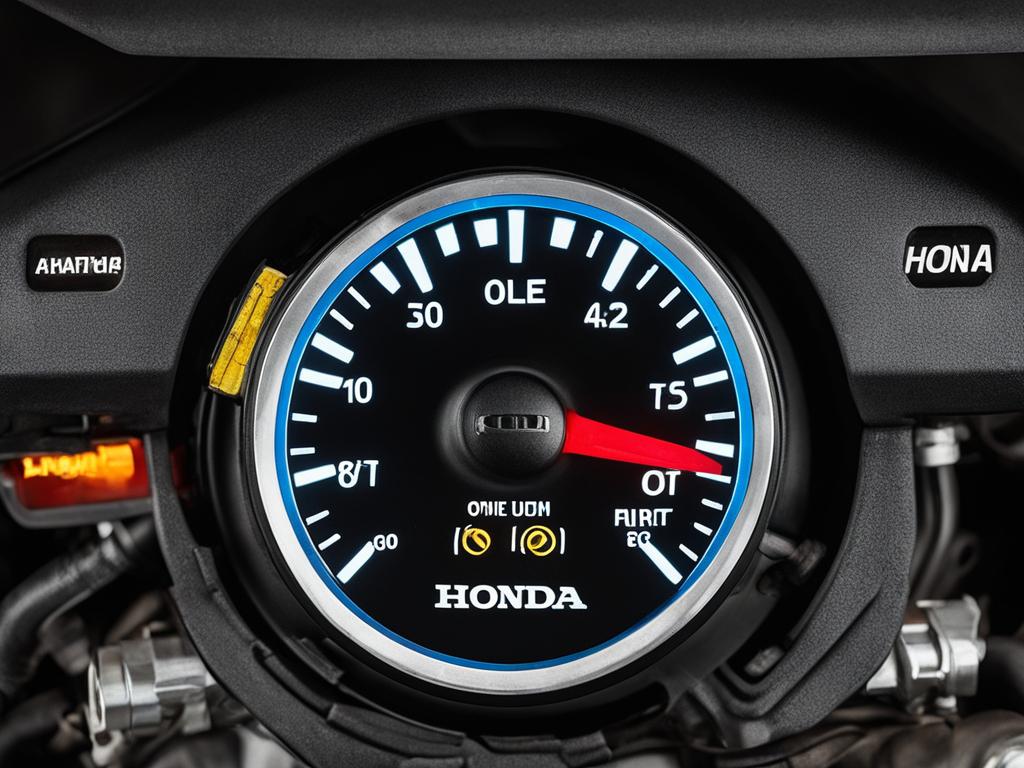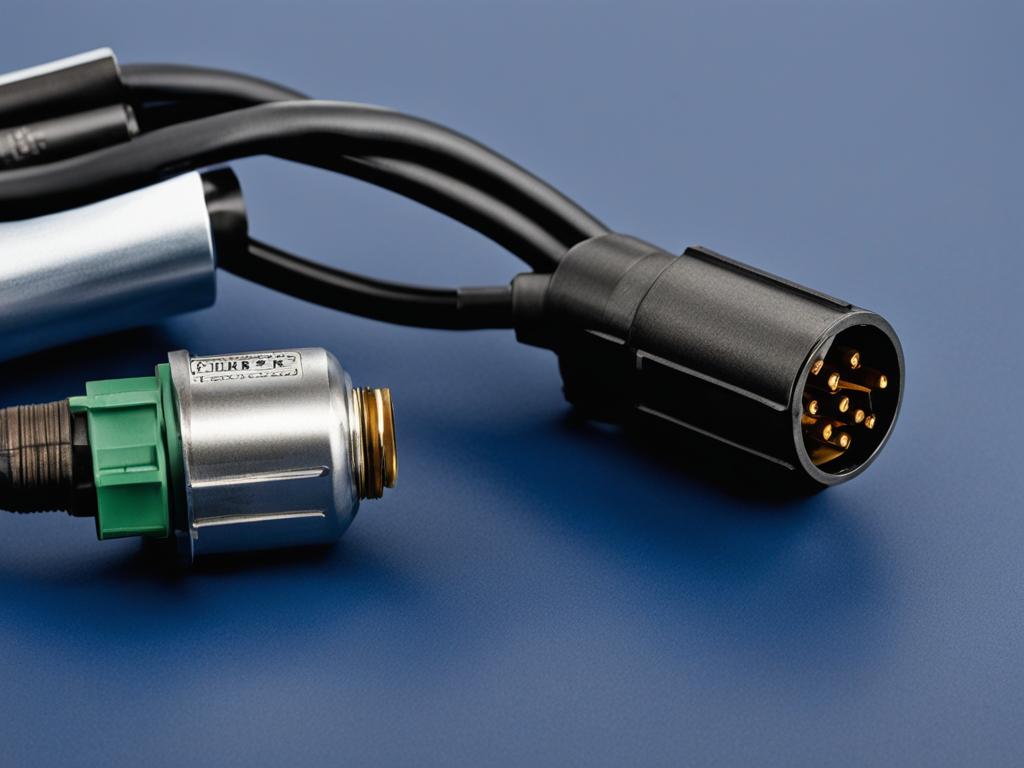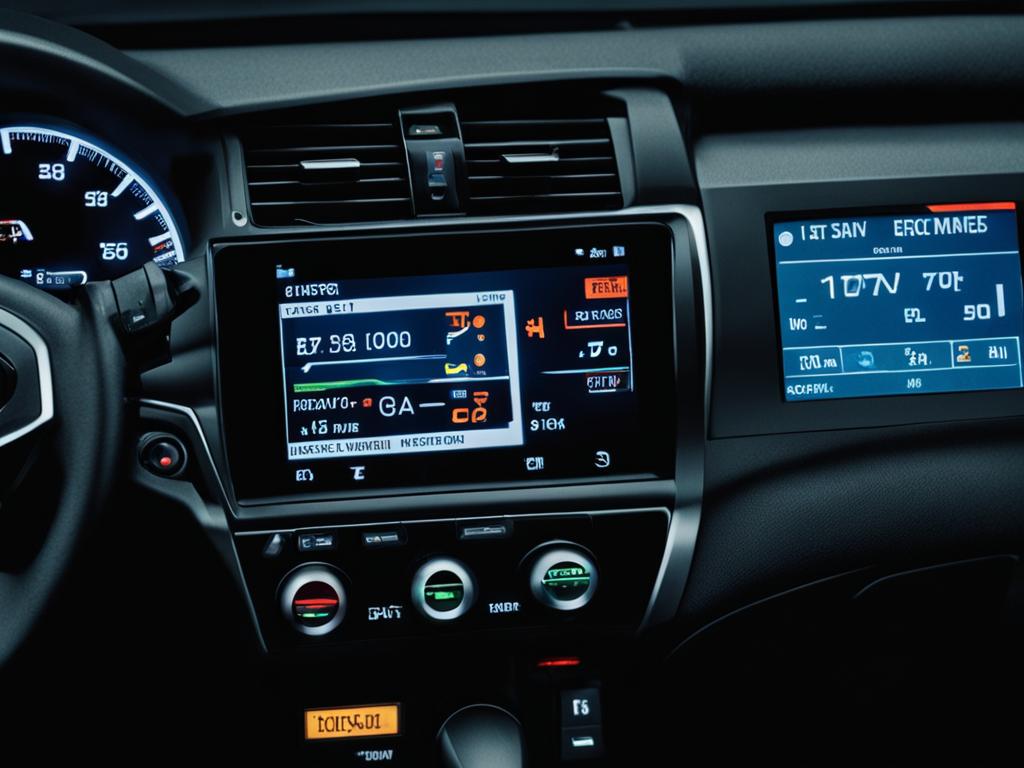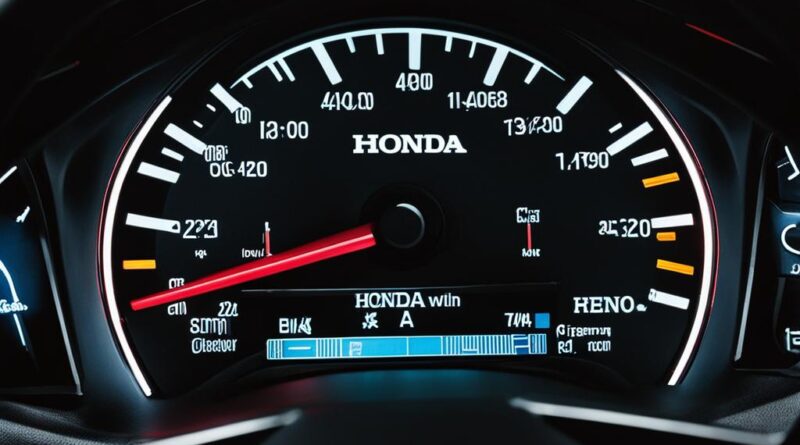Honda Check Engine Light Causes & Fixes: Your Comprehensive Guide
At some point in your Honda ownership journey, you may have encountered the dreaded check engine light illuminating on your dashboard. This mystifying signal can be triggered by various factors, from the relatively innocuous loose gas cap to more severe engine issues. In this article, we’ll discuss Honda check engine light causes and fixes, guiding you through the Honda check engine code process and how to interpret the Honda check engine light meaning for accurate Honda check engine diagnosis.
Key Takeaways
- The check engine light can be activated by a variety of causes, ranging from simple to severe.
- A blinking engine light often signifies a serious issue that needs immediate attention.
- Common components tied to the check engine light include the mass airflow sensor, catalytic converter, and oxygen sensor.
- Professional diagnostic tools and technicians allow for accurate identification and repair of check engine light issues.
- Regular maintenance and timely repairs help prevent the activation of the check engine light and keep your Honda in optimal condition.
Introduction to Your Honda Check Engine Light
When the check engine light on your Honda illuminates, it is a signal from the vehicle’s electronic control module (ECM) that there is an issue within the electronic control system. The check engine light, which can appear as an amber or red signal, or simply as an engine icon, indicates that the onboard diagnostics system has detected a problem. The ECM then stores a related trouble code in its memory. While the light does inform you of an existing issue, deciphering the specific cause and solution requires further diagnosis, which can be accomplished with the help of professional diagnostic tools and experienced technicians.
Knowing how to address a Honda check engine light reset or understanding why the Honda check engine light stays on is crucial for maintaining your vehicle’s performance and avoiding costly repairs. In some cases, a simple reset might resolve the issue, but it’s also possible that the light stays on due to a more serious underlying problem. Either way, seeking a professional Honda check engine diagnosis is necessary to ensure the best course of action.
Furthermore, it’s essential to keep in mind that ignoring the check engine light can lead to reduced performance, increased emissions, and potential damage to your vehicle. As a Honda owner, staying vigilant and promptly addressing any engine issues is essential for a safer, smoother, and more fuel-efficient driving experience.
Now that you’re familiar with the importance of addressing your Honda check engine light, let’s explore some common triggers and fixes, as well as the process of diagnosing your Honda’s check engine light codes in the subsequent sections. With this information, you’ll be better equipped to manage your Honda’s engine concerns and maintain your vehicle in top condition.
Common Triggers of the Honda Check Engine Light
Several factors can cause your Honda check engine light to come on, ranging from easily fixable issues to those that require professional attention. Understanding these common triggers can help you address the problem and maintain your vehicle’s performance. Here, we explore some frequent causes for the activation of the Honda check engine light.

Faulty Mass Airflow Sensor and Replacement
A common trigger of the Honda check engine light is a faulty mass airflow sensor (MAF), which necessitates replacement. The MAF is a critical component that measures the air entering the engine and helps adjust fuel delivery for optimal operation. A defective MAF can cause issues like difficulty starting, rough idling, or sudden changes in throttle position.
Vacuum System Leaks and Their Impact
Vacuum system leaks are another reason the check engine light may illuminate. Every Honda relies on an intricate vacuum system for various functions, including routing gasoline fumes through the engine to limit harmful emissions. Symptoms of a vacuum leak include unusually high RPMs while idling or random surges in power. Over time, vacuum hoses can deteriorate due to extreme temperatures, leading to cracks and leaks.
The Role of the Gas Cap in Triggering Check Engine Light
A loose, damaged, or missing gas cap can also prompt the check engine light to come on. The gas cap in your Honda has the essential role of preventing fuel evaporation when the vehicle is not in use, maintaining pressure in the fuel tank, and sealing the fuel system. A compromised gas cap can lead to increased fuel consumption, requiring more frequent visits to the gas station. A check engine light that appears shortly after refueling should prompt a check of the gas cap’s condition.
Aftermarket Parts Installation Issues
Problems with aftermarket parts, such as alarms or exhaust systems, can disrupt your Honda’s operation if not properly installed. Poor installation of these components can lead to a drained battery, unwanted activation of the check engine light, or even prevent the vehicle from starting. It is crucial to have aftermarket items professionally installed to avoid such issues and potential damage.
Significance of New Spark Plugs and Wires
The replacement of old or faulty spark plugs and wires is fundamental to Honda’s functioning. Spark plugs ignite the air/fuel mixture within the combustion chamber, driving the engine. Their companion spark plug wires transfer this spark from the ignition coil to the plugs. Deteriorated spark plugs and wires can lead to suboptimal performance, starting difficulties, and even harm other components such as O2 sensors and the catalytic converter, potentially resulting in expensive repairs.
Honda’s Exhaust System and Catalytic Converter Concerns
Complications with the exhaust system and the honda catalytic converter can cause the Honda check engine light to activate. The catalytic converter, a vital part of the exhaust system, converts harmful carbon monoxide emissions into less toxic carbon dioxide. Neglecting maintenance can result in a faulty catalytic converter, leading to decreased performance, failed emissions tests, and an adverse impact on fuel economy. Overheating of the car is also a risk, which may trigger further damage.
Regular vehicle diagnostics and maintenance are essential to prevent these issues and the illumination of the check engine light. In some cases, you may encounter a honda check engine light blinking, which implies a more critical situation that demands immediate attention. This could indicate a severe engine malfunction with the potential to cause considerable damage if not addressed promptly.
https://www.youtube.com/watch?v=NxzAd0znYsgA blinking check engine light signifies severe issues that require immediate attention, while a steady light may suggest minor problems that still warrant timely maintenance and repair.
- Pay close attention to any unusual noises or smells coming from your vehicle, as these may indicate a problem with the catalytic converter or other components of the exhaust system.
- Inspect the catalytic converter for any signs of damage or leaks, particularly if you have recently driven over a severe pothole or impacted a curb.
- Follow your Honda’s recommended maintenance schedule, including regular inspections of the exhaust system and its components.
- Act promptly when the check engine light illuminates, especially if it is blinking, to avoid further damage to your vehicle.
By taking these steps, you can maintain your Honda’s exhaust system and catalytic converter, ensuring optimal performance and longevity while preventing the activation of the check engine light due to these concerns.
Oxygen Sensor and Battery Failures: Navigating Engine Alerts
Among various factors that can trigger your Honda check engine light, oxygen sensor and battery problems are worth special attention. In this section, we will discuss the importance of a functioning O2 sensor and the potential consequences of battery issues, providing you with essential information to better navigate these situations.
Replacing a Faulty O2 Sensor
A Honda oxygen sensor, also known as the O2 sensor, is responsible for measuring the proportion of oxygen in the exhaust gases. When this sensor fails, it can lead to an incorrect fuel mixture, reduced fuel efficiency, and result in your Honda check engine light came on. Replacing this critical component is imperative for maintaining your vehicle’s performance and fuel economy.

Dealing with Battery Issues and Engine Light Indicators
A weak or dead battery not only affects your Honda’s starting capability but can also cause Honda check engine light codes to appear. Potential Honda battery problems can negatively impact the performance of the vehicle’s lights, radio, and phone charging. It’s crucial to address battery issues swiftly to prevent being stranded and to avoid further electrical complications that may result in the activation of the check engine light.
In conclusion, being proactive in addressing your Honda’s oxygen sensor and battery problems is essential in ensuring a smooth driving experience and avoiding unnecessary complications. By swiftly replacing a faulty O2 sensor and keeping an eye on any weakening battery symptoms, you can effectively mitigate the activation of the check engine light and prolong the life of your vehicle.
Diagnosing Your Honda’s Check Engine Light Codes
When your Honda’s check engine light comes on, understanding the specific codes associated with the issue can help you take appropriate action. This section will provide insights into the troubleshooting process, including the role of diagnostic trouble codes (DTC) and the use of code readers and professional diagnostics for efficient problem identification and resolution.
Understanding the Role of Diagnostic Trouble Codes (DTC)
Diagnostic trouble codes, or DTCs, are error codes stored in your Honda’s electronic control module (ECM) when the check engine light is activated. These codes are instrumental in pinpointing various vehicle issues, such as emission control malfunctions or ignition system faults. However, interpreting these codes accurately and identifying the underlying problem necessitates the use of proper diagnostic tools and expertise.
Check Engine Light Code Readers and Professional Diagnostics
For Honda owners seeking a DIY diagnosis, using a honda check engine code reader can provide an initial understanding of why the engine light is on. It’s important to note, though, that code readers merely indicate the code linked to the issue and do not offer in-depth analysis or solutions.
To address potentially complex issues and ensure appropriate repairs, engaging professional diagnostic services is highly recommended. Certified Honda technicians or professional service centers will conduct thorough examinations to pinpoint the underlying problems accurately, ultimately turning off the honda check engine light and restoring optimal vehicle performance.

If your honda engine light stays on after you’ve completed minor repairs or a basic diagnostic test, seeking a professional diagnosis is crucial to prevent further damage to your vehicle and avoid expensive repairs. Timely action will give you peace of mind and ensure the longevity and excellent performance of your beloved Honda.
Conclusion
The Honda check engine light serves as an important warning signal, alerting you to potential issues that could affect your vehicle’s performance. These issues can range from minor inconveniences, such as a loose gas cap, to critical malfunctions that require immediate attention. While the light itself does not provide specific information about the problem, diagnosing and interpreting the diagnostic trouble codes is crucial for identifying the root cause and finding the appropriate solution.
Addressing these issues promptly and with the help of professional assistance can safeguard your Honda from further damage, saving you from costly repairs down the line. Regular maintenance and timely check-ups are essential for preventing check engine light occurrences, ensuring your Honda remains in optimal condition for the road ahead.
In conclusion, staying vigilant and responsive to your Honda’s check engine light is crucial for maintaining the vehicle’s performance and preserving its longevity. By understanding its purpose and following recommended practices for check engine light diagnosis, you can ensure that your Honda stays in prime condition, providing you with a safe and pleasurable driving experience.
FAQ
What does it mean when my Honda check engine light comes on?
The check engine light indicates that there is an issue within the electronic control system of your Honda, identified by the vehicle’s electronic control module (ECM). The specific cause and solution need further diagnosis, which can be achieved through professional diagnostic tools and experienced technicians.
How can I diagnose the check engine light code?
You can use a code reader to retrieve the diagnostic trouble code that triggered the check engine light. However, it’s best to consult a certified Honda mechanic or professional service center for a thorough diagnosis, as these codes only point to the issue without providing a detailed explanation or solution.
What are common triggers for the Honda check engine light?
Common triggers include a faulty mass airflow sensor, vacuum system leaks, a loose or damaged gas cap, issues with aftermarket parts installation, and old or faulty spark plugs and wires.
How can I fix a blinking Honda check engine light?
A blinking check engine light usually signifies a severe engine malfunction. Turn off your vehicle and seek immediate assistance from a certified Honda mechanic or professional service center to diagnose and repair the problem.
Why is my Honda check engine light still on after I replaced the faulty component?
The check engine light may still be on due to the ECM not yet resetting the trouble code. In this case, you can try resetting the check engine light by disconnecting your vehicle’s battery or using a code reader. If the light persists, consult a certified Honda mechanic for further diagnosis and repairs.
Do I need to replace my oxygen sensor if my Honda check engine light is on?
An illuminated check engine light could indicate a faulty oxygen sensor. However, it’s essential to first diagnose the specific issue by retrieving the trouble code and consulting a professional technician before replacing any components.
How can I prevent my Honda check engine light from coming on?
Keep up with regular maintenance, such as checking and replacing air filters, spark plugs, and fluids, to ensure your Honda remains in optimal condition. Additionally, using genuine Honda parts and having aftermarket accessories professionally installed can help prevent check engine light occurrences.




